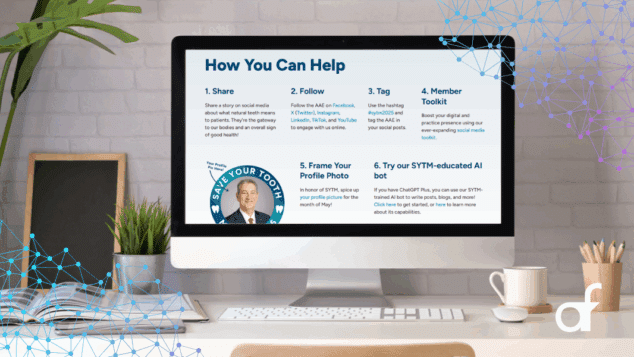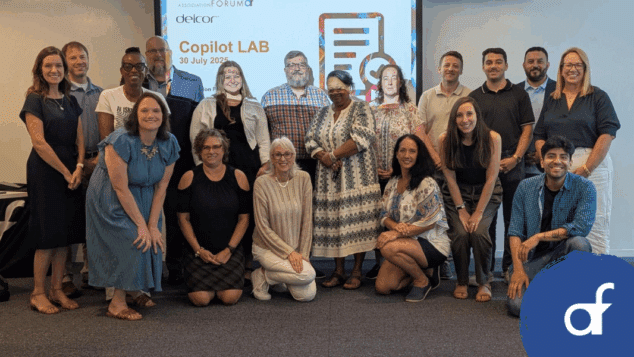Building a Strong Foundation: Unlocking the Power of Data Governance, Analysis, and Security for Business Success

The 35th annual Association Forum Holiday Showcase invited us all to challenge old assumptions and imagine new strategies for building ourselves and our businesses.
The theme of Holiday Showcase was Incubate, which highlights both innovation and evolution. It’s a fitting theme for a year that saw the proliferation of artificial intelligence (AI) technologies and a great deal of excitement surrounding the use and implementation of these technologies.
At DelCor, we strive to be innovative. We continually reimagine what it means to be a leader and a voice that associations and nonprofits can trust and look to for guidance. This past year, as we’ve been envisioning how business will adjust to incorporate AI technologies, it’s become clear that now more than ever it’s important to remember the fundamentals. Having advanced technology is awesome, but lacking the fundamental requirements to utilize that technology effectively defeats the purpose of adopting it. Garbage in still equals garbage out. In other words, effective innovation requires a solid foundation.
For an association, a solid foundation requires an effective use of data. What you know about your customers—including who they are and what they’ve experienced (purchases made, events attended, roles occupied, and even web pages viewed)—can help you identify and meet their needs more effectively. But it’s not enough to have the data. To truly be able to utilize it you need to be thoughtful about the collection, protection, and application of your data elements.
Governance
To keep up with the increasingly data-driven business landscape, your organization needs to have a strategically designed approach to handling data. You need to think about what to collect, how to collect it, and—perhaps more importantly—why you’re doing so. Work with key staff members to identify:
- What are the questions we need answered/problems we need to solve?
- What data elements do we need in order to address our questions and problems?
- Do we already have those elements and if so, where do they live?
- How can we put the elements together to tell a meaningful story that answers the questions/solves the problem?
- What can we do with these elements and how do we go about utilizing them?
After establishing what information you need from customers, you need to determine what capabilities your organization has for collecting and recording those data elements and how your staff can gain access to them in order to use them.
Sometimes it may be a matter of making improvements to how your data is integrated across your platforms so that those elements are more readily available to your staff. Sometimes it’s a matter of changing your engagement with your customers so you can collect the right information.
At the same time, it’s important to be respectful of your constituents when collecting data. These days we all endure a barrage of questions designed to collect our data through all of the websites we visit and the applications we use. You want to properly communicate with your constituents so they not only provide the data you need, but also understand how that data will allow your organization to better serve them.
Analysis and Application
Having the necessary data elements to support your business is only half the battle. You need to be able to utilize that data effectively to inform your decisions and strategies starting with a well-thought-out data governance framework that defines how you collect, store, and access valuable data elements. You’ll also need to identify the most effective way to make that data “speak.”
It’s important to have staff who are skilled in data analytics to help guide the organization’s business strategy. All associations should encourage their staff to have some education in data literacy—an understanding of why having good data matters. But these days we’re learning a lot more about the benefits of using a variety of approaches to data analysis.
For example, reports are an excellent way to communicate what the data points to and how that relates to the business decisions the organization is facing. But increasingly, effective data management involves visualizations and dashboards that allow your staff to make data-informed decisions in real-time. If you’re looking to innovate how your association does business, visual tools are a great place to start.
Security
As you continue to grow and evolve your organization’s strategic vision, it’s important to continually revisit your organization’s cybersecurity posture. It becomes especially important when you introduce new technologies, business processes, and data collection or integration streams. As an organization that collects personally identifiable information (PII) from your members and customers, you are trusted to keep that sensitive information safe from harm. And, it should go without saying, the health of your business also relies on that information being kept safe.
If you don’t already have a healthy cybersecurity posture, it is deeply important for your organization to work towards that goal by ensuring the proper systems are in place to protect against attacks. For example, setting up proactive monitoring and management, implementing the right tools to protect your data, and establishing procedures to swiftly respond to threats are all necessary to maintaining a healthy cybersecurity posture.
To protect the weakest and most common link in data breaches, it’s necessary to have a healthy training program to make your staff aware of the dangers of mishandling information. Getting staff enrolled in some kind of training (we recommend KnowBe4) is crucial.
First Thing’s First
So, while everyone is understandably excited about where the future may take us, it pays to remember that our work is only as good as the foundation on which it rests. In this case, having a solid approach to data management is the bedrock that will support your organization’s ongoing technology advances. Paying attention to data governance, analysis, and security will provide the key building blocks that will allow you to take your operations to the next level.
Tags
Related Articles
Turning AI Into Member Value
How AAE’s Save Your Tooth Month GPT became a personalized marketing assistant for members
The Power of Taking the AI Journey Together
Forum’s first Microsoft Copilot Lab brought together 20 professionals to explore how smart adoption of...
Content governance: Setting up your content for success
Why and how to create smart, sustainable systems and processes for all the content your...




